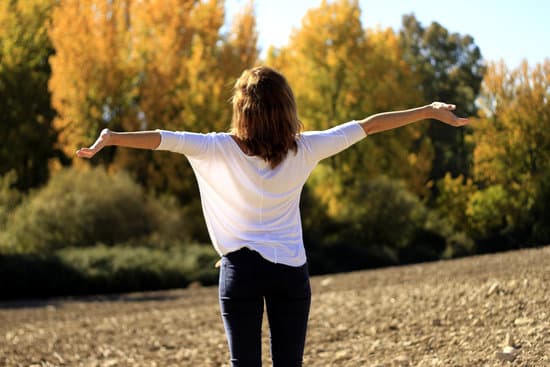Right now, people are feeling the weight of what’s happening in society. At a time when current events can feel overwhelming, there’s sure to be more stress. Folks are on edge and anxious as they attempt to navigate both this present normal, all while navigating unknowns.
Now more than ever, I find peace in returning to foundations for my body, mind, and spirit. When I embarked on a journey of healing from crippling anxiety, amidst other health concerns, going back to some basics was, well, foundational in my healing. You can read more about my story here. Speaking of foundations, it doesn’t get more foundational than our breath. The first thing we all do as we enter the world is take our first breath. Breathing is instinctual and a natural process. We take our breath for granted.
Apart from keeping us alive (already a big deal), the beauty of breathing is that it can actually benefit in more ways than even keeping our body going. There’s a multitude of breathing practices and breath techniques that improve both physical and mental well-being.
Without knowing it, many people develop unhealthy breathing habits. The way we breathe has been influenced by situations and learned behaviors throughout our lives. Our breath is also influenced by our mood. It doesn’t help than our culture worships hustle and bustle. The modern-day of living certainly does not lend thought to mindful breathing. Most of us are “chest-breathers”- meaning we breathe from our chest as opposed to breathing from our bellies. More of that in a little bit, but know that this contributes to more unease, anxiety, and overwhelm. We are not taught to use our breath to even more of our benefit.
Real talk: Your breath is one of the most readily available tools for managing stress and anxiety out there! Even more good news- it’s FREE-99! It doesn’t cost a thing!
Have you ever paid attention to your breath when you’re anxious or super stressed out? Is it fast and shallow? Next time you’re relaxed, ask yourself the same questions. What kind are breaths are you taking? Are they a little deeper or even? Chances are, your breath might feel more shallow, maybe even more labored, when under stress. Breathing usually feels more even and easy when you’re at ease.
Having been home for going on two weeks straight, focusing on my breath has been my saving grace. During a particularly high-stress time, I haven’t been able to go to counseling or visit friends to process everything going on. It’s been tough. Thankfully, I still have my breathing techniques to get me by! Truthfully, I’ve lost count of how many times I’ve used my breath to center myself over the last two weeks, even avoid anxiety attacks.
How in the world is that possible? Let’s talk about how breathing can affect our physiology.
YOUR SYMPATHETIC AND PARASYMPATHETIC NERVOUS SYSTEMS
There’s a part of our entire nervous system that is directly impacted by our breathing. This is called our autonomic nervous system (ANS).
The ANS is super important. It’s the automatic connection between our internal organs and glands, and the central nervous system. Basically, your ANS has a lot to do with the brain and other stuff happening inside our bodies that we don’t really have to think about. The ANS helps maintain a balance in many vital functions of the body such as heartbeat, salivation, perspiration, and breathing.
The ANS can be divided into the sympathetic nervous system (SNS) and parasympathetic nervous system (PNS). The sympathetic nervous system is our “fight or flight” system. It gets us wound up; ready to respond to fear or threat.
The parasympathetic is our “rest and digest” system. It calms us back down. Ideally, these two systems work in tandem.
The sympathetic nervous system is connected to nerves that go all up and down our spinal cord. This branch of nerves allows our ANS to mobilize multiple organs quickly and simultaneously. The parasympathetic nervous system is connected just to the top and bottom of the spinal cord with fewer branches of nerves This creates a slower and more direct regulation in the organs.
Let’s say you’re walking on a path and come across a bear. Your body tenses, your heart starts to race, and your breathing gets faster. These are examples of your SNS responding to the perceived threat and kicking into action so you can get-the-heck outta there. Once you’re out of harm’s way, your PNS helps your heart rate settle down and muscles relax.
HOW YOUR BREATH INFLUENCES THESE SYSTEMS
When you breathe, your autonomic nervous system responds. When you take quick and shallow breaths, the sympathetic nervous system (fight or flight) is activated. As mentioned before, that’s great if you’re in danger and about to be chased by a bear, but our bodies don’t know the difference between feeling anxious or stress out about something and needing to run for our lives.
When you take slow and deep breaths, you pull oxygen all the way down into your core and activate your parasympathetic nervous system (rest and digest). This tells your body to chill, get centered, and calm down.
In summary, taking deep, intentional breathes can bring our nervous system back to equilibrium and we can feel calmer.
One of my favorite breathing techniques, in particular, is belly breathing, or more technically speaking, diaphragmatic breathing.
DIAPHRAGMATIC BREATHING (BELLY BREATHING)
Diaphragmatic breathing is a form of deep breathing technique that exercises the diaphragm– the most efficient muscle for breathing. This technique is also sometimes called belly breathing or abdominal breathing.
Diaphragmatic breathing has many benefits. It can lower heart rate, decrease cortisol (stress hormone), and lower blood pressure. It slows your rate of breathing so you’re expending less energy. Diaphragmatic breathing also lowers your chance of injuring or wearing out your muscles.
My personal favorite- this form of breathing can help reduce stress and anxiety. Studies have shown that deep breathing exercises have natural anxiety-reducing effects. They help counteract the “fight or flight” response that kicks in when we feel stressed or scared.
Not to mention, stress weakens the immune system, making us more susceptible to illness. I can’t think of a better time to practice belly breathing!
Sidenote: If you have chronic obstructive pulmonary disease (COPD), it may be helpful to talk with your doctor about doing breathing exercises. COPD causes the diaphragm to be less effective. Doing breathing exercises that benefit the diaphragm specifically is sometimes recommended to strengthen the diaphragm and improve breathing. However, I always like to encourage you to discuss it with a care provider for special conditions.
BELLY BREATHING BASICS
Are you a belly-breathing beginner? Give this a try:
- Sit or lie in a comfortable position (it may be easier to start by lying flat on the floor, on your bed, or another flat, comfy surface). Relax your shoulders.
- Put one hand on your chest and the other hand on your stomach.
- Breathe into your belly. Inhale through your nose for two-three seconds. You should experience the air moving through your nose (nostrils) and into your abdomen, making your stomach expand. It may help to close your eyes and visualize the air filling your belly as you inhale.
- Purse your lips (like you’re about to take a sip of water through a straw) and gently press on your stomach. Exhale slowly for about two seconds. You want your stomach to move outward and inward while your chest remains relatively still.
5. Repeat these steps several times.
Next time you start feeling stress and anxiety creep in, breath, friend, breathe. Practice some belly- breathing by taking slow, intentional breaths for a few minutes. Taking deep breaths can help you voluntarily regulate your ANS by stimulating the parasympathetic nervous system and ease some of that dis-ease.
When in doubt…BREATHE, FRIEND, BREATHE.
I know I am.
– Maddie Adeline



